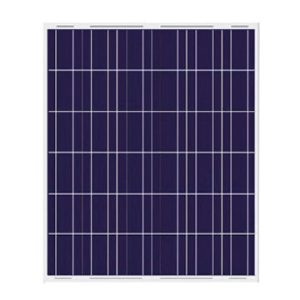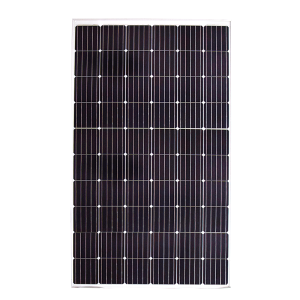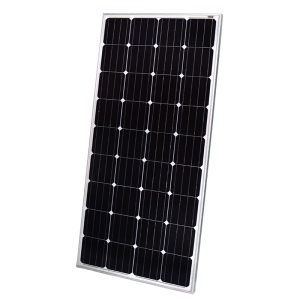Harnessing the power of the sun to generate clean, renewable energy for your home has never been more accessible and cost-effective. With a 5000-watt solar system kit, you can significantly reduce your monthly electricity bills, minimize your carbon footprint, and achieve energy independence. In this comprehensive guide, we’ll explore the benefits, components, and installation process of a 5000-watt solar system kit, empowering you to make an informed decision about transitioning to solar power.
Understanding Solar System Kits
What is a 5000-Watt Solar System Kit?
A 5000-watt solar system kit is a complete package designed to generate approximately 5000 watts of electricity, which can meet the energy needs of an average-sized household. It typically consists of high-efficiency solar panels, an inverter, racking system, wiring, and other essential hardware components. These kits are engineered to harness the sun’s energy and convert it into usable electricity for your home.
Components of a 5000-Watt Solar System Kit
A typical 5000-watt solar system kit includes the following key components:
- Solar Panels: The heart of the system, these photovoltaic panels convert sunlight into electrical energy. A 5000-watt kit usually includes 16-20 high-efficiency monocrystalline or polycrystalline solar panels, each rated between 250-320 watts.
- Inverter: This device converts the direct current (DC) electricity generated by the solar panels into alternating current (AC) that can be used to power your home’s electrical appliances and lights.
- Racking System: A sturdy mounting structure that secures the solar panels in an optimal position to capture maximum sunlight throughout the day.
- Wiring and Electrical Components: Cables, connectors, and other electrical components that connect the solar panels, inverter, and your home’s electrical system.
- Monitoring System (Optional): Some kits include a monitoring system that allows you to track the performance of your solar installation and energy production in real-time.
- Installation Hardware and Instructions: Essential hardware like mounting brackets, grounding equipment, and detailed installation guides to ensure proper setup and safety.
By investing in a complete 5000-watt solar system kit, you can streamline the process of transitioning to solar energy and enjoy the benefits of a turnkey solution tailored to your home’s energy needs.
Benefits of Using a 5000-Watt Solar System Kit
Cost Savings and Return on Investment
One of the primary advantages of installing a 5000-watt solar system kit is the potential for significant cost savings on your monthly electricity bills. By generating your own clean energy, you can reduce your reliance on utility companies and their fluctuating rates. Over time, the savings can offset the initial investment in the solar system, providing a substantial return on investment (ROI).
To illustrate the potential cost savings, let’s consider an example:
- Average monthly electricity bill: $150
- Estimated monthly electricity production from a 5000-watt solar system kit: 650 kWh (based on your location and sunlight exposure)
- Utility electricity rate: $0.12 per kWh
In this scenario, your monthly savings would be approximately $78 (650 kWh x $0.12/kWh). Over the course of a year, you could save around $936, and in 10 years, the total savings could reach $9,360 or more, depending on potential utility rate increases.
Additionally, many states and local governments offer incentives, tax credits, and rebates for homeowners who install solar systems, further enhancing the financial benefits and accelerating the return on investment.
Environmental Impact and Sustainability
By generating clean, renewable energy from the sun, a 5000-watt solar system kit significantly reduces your carbon footprint and contributes to a more sustainable future. Solar energy is a virtually inexhaustible resource that does not produce greenhouse gas emissions or other pollutants during operation.
According to the Environmental Protection Agency (EPA), the average household’s electricity consumption is responsible for approximately 14,920 pounds of carbon dioxide emissions per year. By switching to solar power, you can offset a substantial portion of these emissions, making a positive impact on the environment.
Furthermore, solar energy is a decentralized and locally sourced form of power generation, reducing the need for large-scale power plants and the associated environmental impacts of fossil fuel extraction and transportation.
Energy Independence and Reliability
With a 5000-watt solar system kit installed, you can achieve greater energy independence and reliability. Solar energy is a renewable resource that is not subject to the same supply constraints and price fluctuations as traditional fossil fuels. By generating your own electricity, you become less reliant on utility companies and their potential rate hikes or service disruptions.
Additionally, many solar system kits can be paired with battery storage solutions, allowing you to store excess energy generated during the day for use at night or during power outages. This added resilience can provide peace of mind and ensure a consistent supply of electricity, even in the event of grid failures or natural disasters.
Choosing the Right Solar System Kit
Assessing Your Energy Needs
Before selecting a solar system kit, it’s crucial to assess your household’s energy needs accurately. This will help you determine the appropriate system size and ensure that you generate enough electricity to meet your consumption requirements.
To assess your energy needs, you can follow these steps:
- Review your past electricity bills to understand your average monthly and annual energy consumption.
- Consider any upcoming changes that may affect your energy usage, such as home renovations, additions, or new appliances.
- Evaluate your energy-saving habits and potential for reducing consumption through efficiency measures.
- Determine your desired level of energy independence (e.g., offsetting 50% or 100% of your electricity usage).
By accurately assessing your energy needs, you can select a solar system kit that is appropriately sized and optimized for your specific requirements, ensuring maximum efficiency and cost-effectiveness.
Selecting Solar Panel Types and Sizes
When choosing a 5000-watt solar system kit, it’s essential to consider the types and sizes of solar panels included. The two main types of solar panels are monocrystalline and polycrystalline, each with its own advantages and disadvantages.
Monocrystalline solar panels are typically more efficient and have a higher energy output per square foot, but they are also more expensive. Polycrystalline panels, on the other hand, are less expensive but slightly less efficient.
The size of the solar panels is also an important consideration. Larger panels can generate more electricity but may require more roof space or ground area for installation. Smaller panels may be more suitable for limited spaces but will require a higher number of panels to achieve the desired 5000-watt output.
When selecting solar panels, it’s essential to strike a balance between efficiency, cost, and available installation space to ensure optimal performance and value for your investment.
Comparing Solar System Kit Brands and Models
With numerous solar system kit manufacturers and models available in the market, it’s crucial to compare different options to find the best fit for your needs and budget. Here are some key factors to consider when evaluating solar system kit brands and models:
- Brand Reputation and Warranty: Research the manufacturer’s reputation, customer reviews, and warranty coverage to ensure you’re investing in a reliable and well-supported product.
- System Components and Quality: Evaluate the quality and specifications of the individual components, such as solar panels, inverters, and racking systems, to ensure they meet industry standards and performance expectations.
- Efficiency and Performance Ratings: Compare the efficiency ratings and expected energy output of different solar system kits to determine which option provides the best value for your investment.
- Installation and Support Services: Consider the availability of professional installation services, technical support, and maintenance plans offered by the manufacturer or local installers.
- Pricing and Financing Options: Compare the upfront costs and explore financing options, such as loans, leases, or power purchase agreements, to find the most affordable solution for your budget.
By thoroughly researching and comparing different solar system kit brands and models, you can make an informed decision that meets your specific needs, budget, and long-term goals for solar energy adoption.
Installing and Maintaining Your Solar System Kit
Site Evaluation and Preparation
Before installing your 5000-watt solar system kit, it’s essential to evaluate your site and prepare the location for optimal performance and safety. Here are some key considerations:
- Roof or Ground Assessment: Determine the most suitable location for your solar panels, whether on your roof or on the ground. Evaluate factors such as sun exposure, shading, structural integrity, and accessibility.
- Orientation and Tilt: Position your solar panels to face the optimal direction (typically south-facing in the northern hemisphere) and at the ideal tilt angle to maximize sunlight exposure throughout the year.
- Electrical System Compatibility: Ensure that your home’s electrical system is compatible with the solar system kit and meets local building codes and regulations.
- Permits and Inspections: Obtain the necessary permits and schedule inspections with local authorities to ensure compliance with safety and zoning regulations.
- Site Preparation: Clear the installation area of any obstructions, trim trees or vegetation that may cause shading, and prepare the surface for mounting the racking system.
By conducting a thorough site evaluation and preparation, you can ensure that your solar system kit is installed correctly and operates at peak efficiency, maximizing your energy production and cost savings.
Step-by-Step Installation Guide
Installing a 5000-watt solar system kit can be a complex process, and it’s recommended to hire a professional solar installer or follow the manufacturer’s instructions carefully. However, here’s a general overview of the installation process:
- Assemble the Racking System: Securely mount the racking system on your roof or ground, following the manufacturer’s guidelines and local building codes.
- Install the Solar Panels: Carefully position and secure the solar panels onto the racking system, ensuring proper alignment and orientation for maximum sunlight exposure.
- Connect the Wiring: Connect the solar panels to the inverter and your home’s electrical system using the provided wiring and electrical components, following all safety protocols.
- Set Up the Inverter: Configure the inverter according to the manufacturer’s instructions, ensuring it is properly grounded and connected to your electrical panel.
- Install Monitoring System (Optional): If your kit includes a monitoring system, follow the instructions to set it up and connect it to your solar system and internet for remote monitoring and data tracking.
- Final Inspection and Activation: Once the installation is complete, schedule a final inspection with local authorities to ensure compliance and obtain approval to activate your solar system.
- System Monitoring and Maintenance: Regularly monitor your solar system’s performance and conduct routine maintenance tasks, such as cleaning the panels and checking electrical connections, to ensure optimal energy production.
By following a step-by-step installation guide and adhering to safety protocols, you can ensure a successful and efficient installation of your 5000-watt solar system kit.
Monitoring and Maintenance Tips
To ensure your 5000-watt solar system kit operates at peak performance and provides long-lasting benefits, it’s essential to implement a regular monitoring and maintenance routine. Here are some tips to help you keep your solar system in top condition:
- Monitor System Performance: Regularly check your solar system’s monitoring system or inverter display to track energy production and identify any potential issues or performance drops.
- Clean Solar Panels: Dust, dirt, and debris can accumulate on your solar panels, reducing their efficiency. Clean the panels regularly with a soft brush or a water-based solution to maintain optimal energy production.
- Inspect Electrical Connections: Periodically inspect the electrical connections between the solar panels, inverter, and your home’s electrical system to ensure they are secure and free from corrosion or damage.
- Check for Shading: Monitor the area around your solar panels for any new obstructions or vegetation growth that may cause shading, which can significantly reduce energy production.
- Schedule Professional Maintenance: Consider scheduling annual or bi-annual professional maintenance checks to ensure your solar system is operating correctly and to identify any potential issues or necessary repairs.
- Review Warranty and Support: Familiarize yourself with the warranty and support services provided by the manufacturer or installer, and take advantage of any available resources or assistance when needed.
By implementing a proactive monitoring and maintenance routine, you can maximize the lifespan and performance of your 5000-watt solar system kit, ensuring long-term energy savings and a reliable source of clean, renewable power for your home.
Emerging Trends and Future of Solar Technology
Advancements in Solar Panel Efficiency
The solar industry is continuously evolving, with researchers and manufacturers working to develop more efficient and cost-effective solar panel technologies. Some of the emerging trends and advancements in solar panel efficiency include:
- Perovskite Solar Cells: These next-generation solar cells have the potential to achieve higher efficiencies and lower production costs compared to traditional silicon-based panels.
- Tandem Solar Cells: By combining different semiconductor materials, tandem solar cells can capture a broader range of the solar spectrum, increasing overall efficiency.
- Bifacial Solar Panels: These panels can capture sunlight from both the front and rear sides, increasing energy production in certain installations.
- Advanced Light-Trapping Techniques: Researchers are exploring new methods to trap and absorb more sunlight within solar cells, enhancing their efficiency and performance.
As these advancements continue to mature and become commercially available, they could lead to more powerful and cost-effective solar system kits, further accelerating the adoption of solar energy for residential and commercial applications.
Integration with Energy Storage Solutions
One of the emerging trends in the solar industry is the integration of solar systems with energy storage solutions, such as battery banks or solar generators. These storage systems allow homeowners to store excess energy generated during the day for use at night or during power outages, providing greater energy independence and reliability.
As battery technology continues to improve and become more affordable, we can expect to see more solar system kits bundled with energy storage options, offering a complete and self-sufficient solution for homeowners.
Smart Home and Grid Integration
Another exciting development in the solar industry is the integration of solar systems with smart home technologies and grid-interactive capabilities. Smart home systems can optimize energy usage by automatically adjusting appliances and devices based on real-time energy production and consumption data from the solar system.
Additionally, grid-interactive solar systems can communicate with utility companies, allowing homeowners to sell excess energy back to the grid or participate in demand response programs, further enhancing the financial benefits of solar power.
As these technologies continue to evolve, we can expect to see more seamless integration between solar systems, smart home devices, and utility grids, creating a more efficient and interconnected energy ecosystem.
By staying informed about these emerging trends and advancements in solar technology, you can make informed decisions about your solar system investment and ensure that you’re taking advantage of the latest innovations to maximize your energy savings and environmental impact.
Conclusion
Investing in a 5000-watt solar system kit is a smart and sustainable choice for homeowners seeking to reduce their energy costs, minimize their carbon footprint, and achieve energy independence. With the potential for significant cost savings, environmental benefits, and increased reliability, solar power has never been more accessible and attractive.
By following the guidance provided in this comprehensive guide, you can navigate the process of selecting, installing, and maintaining your solar system kit with confidence. From assessing your energy needs and choosing the right components to implementing proper maintenance routines and staying informed about emerging trends, you’ll be well-equipped to harness the power of the sun and enjoy the numerous benefits of renewable energy for years to come.
Remember, the journey towards a more sustainable future starts with small steps, and investing in a 5000-watt solar system kit is a significant stride in the right direction. Embrace the opportunity to power your home with clean, renewable energy and join the growing movement towards a greener, more energy-efficient future.



